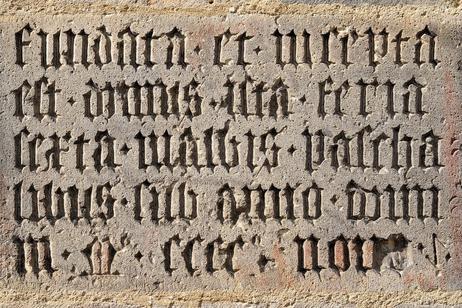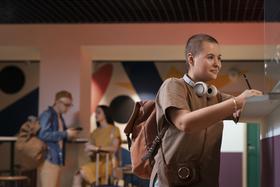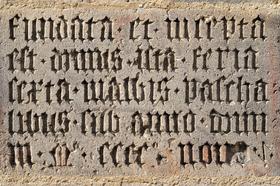I applied to teach at a private school in The Bahamas some years ago. During my interview, the head of school noted that I had a degree in Latin and Greek from McGill University. She exclaimed that she had always wanted her students to learn Latin. I looked at her, somewhat puzzled, and asked why she wanted Latin as part of her school's curriculum; she opined that it would help their SAT scores. I remember being skeptical about this claim, but I was more concerned about what the parents would think about having their children study a dead language. So, the head of the school called a meeting of the parents to discuss her proposed addition of Latin to the curriculum. Many parents expressed their concerns, but the head of the school was compelling in her arguments. As a result, I began teaching Latin to students in Grades 5 through 9.
Selecting a Curriculum
My next challenge, of course, was to select a Latin curriculum. Several courses were available, but I chose the Cambridge Latin Course. It enjoyed a good reputation. It was also very well laid out and organized. I made these choices in the 90s, so we were looking at the first or second edition of that particular curriculum. That was back when there was no such thing as a digital edition. Nowadays, the Cambridge Latin Course has a digital edition and a host of resources available on their website.
This video offers a look at the Cambridge Latin Course.
The way I learned Latin
I had the good fortune to take Latin from Grade 7 through Grade 11 in the Westmount public schools back in the 50s. In those days, we learned Latin with lots of conjugation and declension drills. We did read stories, and in the more advanced years, we read the writings of Caesar. However, the subject was very dry, emphasizing grammar and vocabulary. Fortunately, my teacher was a wonderful man who was passionate about Latin. He inspired me in many ways to continue studying Latin when I went to McGill University. While at McGill, I took classes in Caesar and Cicero. On the Greek side, I read lots of Thucydides and other authors. We spent most of our time translating long passages aloud. There was minimal discussion of the culture, history, and that sort of thing. All we learned was how to translate texts from Latin to conversational English.
My years without Latin
After I graduated from McGill University, I used Latin in my day-to-day work only as a church musician in the Episcopal church. I was a great fan of Renaissance choral music, much of which was sung to Latin texts—the motets and masses of Palestrina and the English composers of the Tudor period. Because I had studied Latin, I knew how to teach pronunciation and the meaning of the texts. All of this was straightforward for me, but the truth is that I never actually taught Latin in a classroom. When it came time to teach these young people, I was determined to make the subject interactive, engaging, and enjoyable.
The way I taught Latin
I also taught English grammar and composition and world history to Grades 5 through 9. Our class sizes were small, typically 12-15 students. The curriculum helped make my students enthusiastic about Latin because the materials were dynamic and well-presented. One of the things that made the course popular was that the Internet had just come into being. The World Wide Web did not exist in today's form, but we had something called FTPmail. That essential tool allowed us to engage virtually with Latin classes in other countries. I identified a couple of schools where we could exchange projects and ideas and have discussions. These interactions captured my students' imaginations. Once we had done some reading and had a couple of characters in mind, my students made paper mache heads of the various characters. Since we had small classes, that activity worked very well.
In the 90s, technology in the classroom consisted of a slide projector. We had no laptop computers or smart TVs mounted on the classroom wall. However, we received a gift of some early-model Compaq PCs. They could have been more powerful, but they allowed us to interact with students in other countries via FTPmail. The technology was primitive, but it engaged my students.
This video is a commercial for Compaq computers from the 1990s.
A window into an ancient world
Something else that made Latin fascinating for my students was that it was a window into another world and time. What my students found so fascinating were the similarities with their world. The ancients' clothing, food, and daily routines created a connection with their daily activities. Food and drink, accounts of daily household routines, and historical accounts of significant events such as the eruption of Mount Vesuvius captured the imaginations of these 20th-century students. The life and story of the Romans gave some perspective to what was happening in their own time. As the French philosopher Jean-Baptiste Alphonse Karr wisely noted, "Plus ça change, plus c'est la même chose"
Vicarious Experiences
Before the advent of smartphones, the World Wide Web, and all the other technological accouterments of our modern age, it was easy to get young people to use their imaginations. They read. They had to create scenarios in their minds. I remember marveling at their descriptions of how they thought a particular Roman family functioned or how a centurion readied for war. The Romans were highly skilled engineers. Aqueducts, bridges, and roads amazed my students because the Roman engineers executed these major projects so expertly. The fact that many of them still existed astounded and impressed these young people.
Conclusion
My Latin classes became far more popular with students and their parents than I could have ever imagined. Preparing lesson plans for five grades required careful planning and even more exquisite delivery of those lessons. It was a satisfying, thoroughly enjoyable experience.
Questions? Contact us on Facebook. @boardingschoolreview
#LatinEducation #TeachingStrategies #LanguageLearning #ClassicalLanguages #EducationSuccess #StudentEngagement #LatinClass















